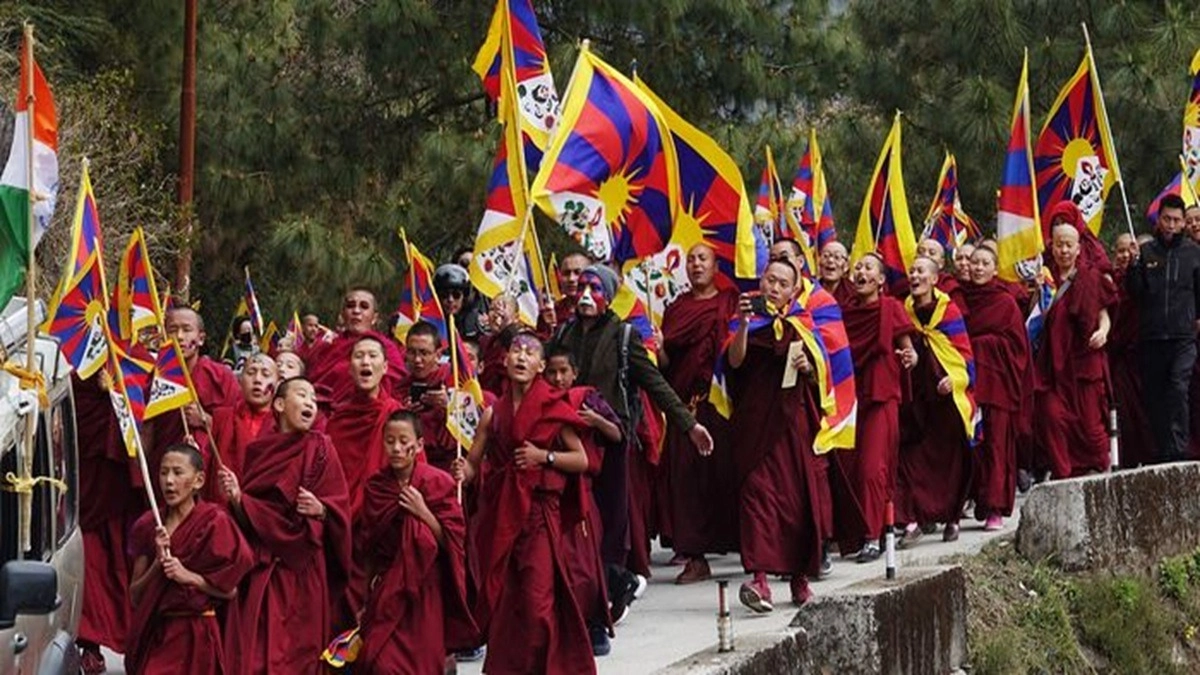Top Stories
Tibetan Youth in India: Resilience Amid Exile and Cultural Loss

The lives of Tibetan youth born in exile in India reflect a complex blend of longing for their homeland and resilience in preserving their cultural identity. Following the *1959 uprising*, when the **Dalai Lama** and thousands of Tibetans fled to India, vibrant Tibetan communities have emerged in regions such as **Dharamshala**, **Karnataka**, and **Uttarakhand**. These settlements, while geographically distant from Tibet, continue to thrive based on a collective memory and a strong commitment to keeping Tibetan traditions alive.
Striving to Preserve Cultural Identity
Maintaining Tibetan identity in exile poses significant challenges for the younger generation. In schools and cultural centres established under the guidance of the **Central Tibetan Administration (CTA)**, young Tibetans learn their language, customs, history, and religious traditions alongside modern subjects. Language immersion programs and dedicated schools are pivotal in this educational effort, ensuring that Tibetan culture remains integral to their identity.
Institutions like the **Norbulingka Institute** play an essential role in this cultural preservation. They teach visual and performing arts, religious philosophy, and the rich history of Tibet to new generations of exiled youth. Despite these initiatives, Tibetan youth often feel like “a drop in the ocean” within Indian society, grappling with identity issues and the fear of cultural dilution. This tension between integration into Indian society and the desire to return to Tibet complicates their experience.
Faith remains a crucial aspect of survival for many. Tibetan Buddhism and reverence for the Dalai Lama provide a spiritual anchor, fostering community bonds. Youth organizations and political activism also channel their longing for their homeland into broader movements aimed at preserving Tibetan autonomy and culture. Events, workshops, and advocacy initiatives led by Tibetan youth are vital for reviving traditional practices and connecting with global audiences.
Challenges of Modernization and Migration
Yet, the pressure to modernize is constant. Many young Tibetans are drawn to economic opportunities in urban centres, leading to a decentralization of their communities. This migration threatens the cohesion of Tibetan settlements and diminishes the transmission of language and rituals. Reports indicate a declining population of young people in many settlements, raising concerns about the survival of schools and the vibrancy of local culture.
Despite these challenges, intergenerational transmission of heritage continues, often taking on innovative forms. Recently, Tibetan youth have begun to incorporate music, contemporary art, digital storytelling, and social media activism into their daily lives. The experience of exile fosters a complex yet distinct Tibetan-Indian identity—one marked by loss and the ongoing recreation of their homeland, not only in memory but also in daily practice and aspirations for the future.
Through these diverse efforts—both traditional and modern—Tibetan youth in exile exemplify resilience. They maintain a living link to their lost homeland while forging new spaces for cultural expression and communal belonging in India.
-

 World5 months ago
World5 months agoSBI Announces QIP Floor Price at ₹811.05 Per Share
-

 Lifestyle5 months ago
Lifestyle5 months agoCept Unveils ₹3.1 Crore Urban Mobility Plan for Sustainable Growth
-

 Science4 months ago
Science4 months agoNew Blood Group Discovered in South Indian Woman at Rotary Centre
-

 World5 months ago
World5 months agoTorrential Rains Cause Flash Flooding in New York and New Jersey
-

 Top Stories5 months ago
Top Stories5 months agoKonkani Cultural Organisation to Host Pearl Jubilee in Abu Dhabi
-

 Sports4 months ago
Sports4 months agoBroad Advocates for Bowling Change Ahead of Final Test Against India
-

 Science5 months ago
Science5 months agoNothing Headphone 1 Review: A Bold Contender in Audio Design
-

 Top Stories5 months ago
Top Stories5 months agoAir India Crash Investigation Highlights Boeing Fuel Switch Concerns
-

 Business5 months ago
Business5 months agoIndian Stock Market Rebounds: Sensex and Nifty Rise After Four-Day Decline
-

 Sports4 months ago
Sports4 months agoCristian Totti Retires at 19: Pressure of Fame Takes Toll
-

 Politics5 months ago
Politics5 months agoAbandoned Doberman Finds New Home After Journey to Prague
-

 Top Stories5 months ago
Top Stories5 months agoPatna Bank Manager Abhishek Varun Found Dead in Well









